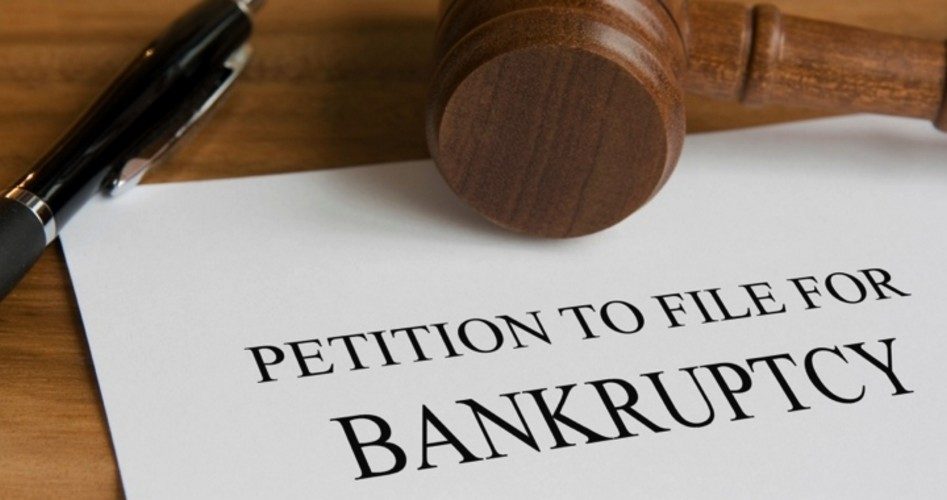
When Michigan Governor Rick Snyder announced his approval for Detroit’s emergency manager Kevin Orr to file for a municipal Chapter 9 bankruptcy, he admitted that Detroit’s problems were decades in the making:
The fiscal realities confronting Detroit have been ignored for too long. I’m making this tough decision so the people of Detroit will have the basic services they deserve and so we can start to put Detroit on a solid financial footing that will allow it to grow and prosper in the future.
This is a difficult step, but the only viable option to address a problem that has been six decades in the making.
One could go back to April 2012 when Detroit Mayor Dave Bing and his city council asked for a financial bailout from Gov. Snyder. It was granted with conditions. When those conditions weren’t met, Snyder appointed Orr, a bankruptcy attorney and high-profile “turnaround” expert, in February this year to see if Detroit could be saved without declaring bankruptcy. After looking at the city’s books, Orr proposed huge cuts to the city’s pension plans and unions — haircuts of up to 90 percent to the plans’ beneficiaries and union’s retirees — which would have saved Detroit. Instead, the unions and pension plans filed suit to block Orr from declaring bankruptcy, triggering Orr’s request to Gov. Snyder.
Now it’s Orr’s job to convince a bankruptcy judge that Detroit qualifies for Chapter 9. It shouldn’t be hard to do: The city has a cash shortfall of $162 million and is running a deficit this year alone of $368 million. It has already defaulted on a pension plan payment and has slashed services drastically. It takes police 58 minutes to respond to 9-1-1 calls, half the streetlights don’t work, trash often isn’t picked up for days, the homicide rate is the highest in the country according to the FBI, unemployment is approaching one out of every five, and the population continues to shrink. At present nearly 40 cents of every dollar of revenue goes toward debt service and “legacy” costs (i.e., health and retirement benefits), and, if nothing is done, they will reach 65 cents in less than four years.
In the 1950s Detroit, known then as Motor City, had nearly two million residents and one of the highest per-capita incomes in the country. The Big Three automakers built and expanded manufacturing plants and jobs were easy to find and hard to fill.
But then, momentum began to shift against the city. Automakers began expanding outside the city limits, Japanese automakers began competing with U.S. automakers with high-quality cars, corrupt politicians took over the mayorship, and city council members were only too willing not only to overlook corruption but to participate in it.
The turning point, if there was one, occurred in 1967 when a small disturbance in the city’s Near West Side erupted into the deadliest and most destructive riot in American history, costing 43 people their lives, injuring another 1,200, resulting in 7,200 arrests and the destruction of more than 2,000 buildings.
Hard on the heels of that disaster was another one: the election in 1976 of Coleman Young. His 19-year reign was marked by scandals and corruption that sent several members of his administration to jail while Young himself managed to escape without serving jail time.
Not atypical was Mayor Kwame Kilpatrick, who served as Detroit’s mayor from 2002 until 2008, and who now serves jail time for 38 felony counts which prosecutors called “a pattern of extortion, bribery and fraud” by some of Detroit’s most prominent officials.
Detroit’s current condition could have been predicted: As people escaped a city now ridden with corruption and high taxes, the revenue base fell. More money was loaned to keep the city afloat, while benefits to city employees continued to escalate. Today Detroit is the city’s largest employer, followed by the public school system — they dwarf employment at General Motors and Chrysler. There are 9,500 workers on the city payroll with another 20,000 retired and collecting benefits. There are now 78,000 abandoned buildings in the city, half of those owing real estate taxes don’t pay them, one-third of the city lives below the poverty line, while two-thirds of the city’s ambulances don’t work.
In his letter, Gov. Snyder tried to paint a positive picture for the future:
The citizens of Detroit need and deserve a clear road out of the ever-decreasing services. The city’s creditors, as well as its many dedicated public servants, deserve to know what promises the city can and will keep.
The only way to do those things is to radically restructure the city and allow it to reinvent itself without the burden of impossible obligations.
Of the city’s $18 billion in debt, $11 billion is unsecured. That’s a nice way of saying that the holders of that debt are going to feel immediate and severe pain. Six billion of it is owed in the form of health and retirement benefits to those 20,000 already retired. Three billion is owed to pension plans for those still working. And there’s another half billion in general obligation bonds.
The city will have to wait for at least 30 days before the court determines if the city qualifies for a Chapter 9 proceeding. Once that is finalized, creditors — some 100,000 of them — will line up to see how much of the ravaged carcass of the city they might be able to salvage for themselves. They will also have to wait to see what sort of “viable plan” Orr comes up with to resurrect the city. Part of his original plan was to earmark $1.25 billion to restore some of the city’s deteriorating infrastructure and services. Beyond that, there do not appear to be any plans. He may be forced to sell off prized city assets such as its airport and its beloved Belle Isle Park. He’s already sold off three of the city’s casinos to bondholders for 75 cents on the dollar, with the city getting back $11 million a month. But this is pitifully small potatoes in the grand scheme of things. In the end, Orr may be forced to do a “cram down,” which would force reluctant bondholders, pension plans, and unions to support a plan that would allow Detroit the opportunity to breathe once again.
Many other cities teetering on the edge are watching with great interest as Detroit beats the first path through the snow. Ken Noble, a New York bankruptcy lawyer, said:
If Detroit comes out of this [bankruptcy as] a decent credit risk, other municipalities are going to absolutely want to follow [its] lead. This is a … watershed moment for municipal finance. And, really, it is the only shot that Detroit really has.
Detroit difficulties were encapsulated in one single unguarded moment when Herbert Jenkins, a city employee who has been filling potholes for the past 25 years, was asked about his retirement plans. He responded: “I was planning on retiring in October, but now I’m not sure. I have a lot of questions.” Jenkins is 50.
A graduate of Cornell University and a former investment advisor, Bob is a regular contributor to The New American magazine and blogs frequently at www.LightFromTheRight.com, primarily on economics and politics. He can be reached at [email protected].



